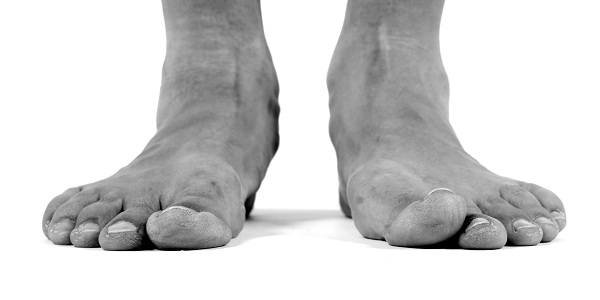Flat feet

A person suffers from flat feet or is dustbanlia if the arch on the inside of his foot is flat.
This allows the entire lower surface of the foot to rest on the floor or ground when a person stands up.
The condition is usually painless and can occur when the arches of the feet do not develop in childhood.
In other cases, it may develop after injury or due to wear and tear as a result of advancing age.
Flat feet sometimes cause problems in the ankles and knees because the condition they create changes the overall position of the feet especially when standing and walking.
What are the symptoms?
Most people with dustabanlia do not show any characteristic clinical signs. But it is possible that some of those affected may experience pain in the feet, especially in the area of the heel or arch.
At the same time, swelling on the inside of the ankle may occur and calluses may appear on the inside of the heel.
If you or your child experience pain in your legs and feet, seek medical attention.
What are the causes?
Flat feet are normal in infants and young children because the arch of the foot has not yet developed.
Most people develop arched feet in childhood but sometimes this may not happen.
This is considered a normal variation of the foot and there is a chance that people with this type of foot will have problems in the future.
It is also possible for the arches of the feet to atrophy over time.
Over the years, the tendon on the inside of the ankle that supports the arches of the foot can wear out and become the cause of flat feet.
The factors that increase the risk of the appearance of flat feet are:
• Obesity;
• Traumatic injury to the foot or ankle;
• Rheumatoid arthritis;
• Aging;
Treatment of flat feet
Treatment is not necessary if the affected person does not experience pain or discomfort.
If flat feet cause pain, your doctor may suggest:
• Orthopedic devices to strengthen the arches of the feet, such as specially adapted insoles, are available commercially without a prescription.
If you cannot find suitable orthopedic devices, you can order special insoles or shoes to be made for you, taking the contours of your feet beforehand.
This is the best possible option as it will provide you with maximum convenience.
These orthotics will not cure flat feet and are only intended to relieve the symptoms and discomfort created.
• Stretching exercises – some dustabanlia have a shortened Achilles tendon and therefore stretching exercises help to improve the condition of the feet.
• Wear the right shoes – generally higher shoes provide some stability to the feet and are therefore a better solution for flat feet than low shoes and sandals.
Surgery
Surgery is not only used to correct flat feet, but only when there is excessive stretching or tearing of one of the tendons that keep the arch of the foot in shape.
If you experience slight pain in your feet and have a flat foot, you can do the following:
• Avoid activities that can worsen the condition of the arches, for example you can swim, walk and cycle, but not run or jump;
• If you are overweight, consider following a weight loss diet to reduce pressure on your legs.



